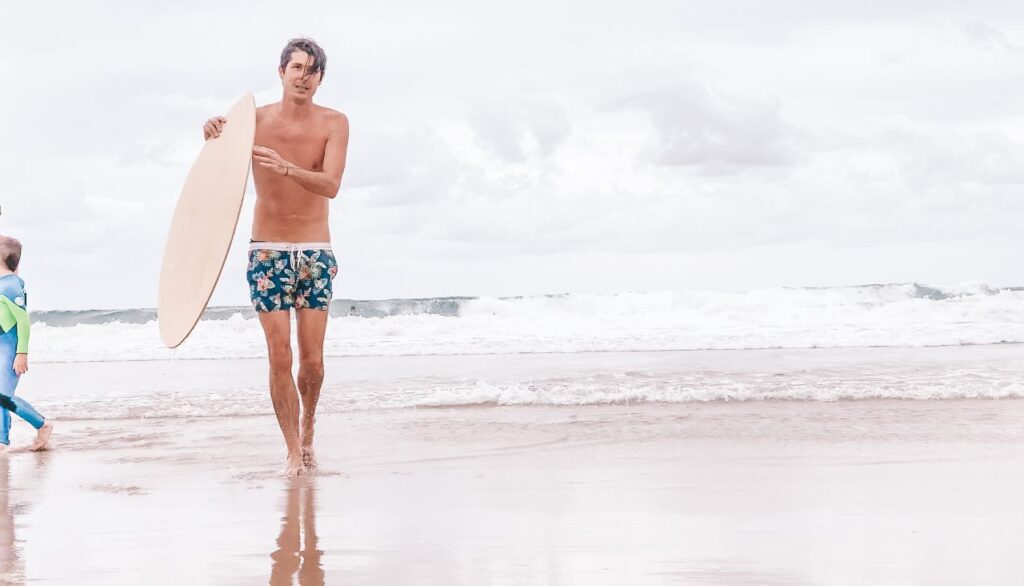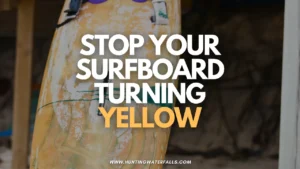If you're thinking of taking up skimboarding you might be wondering whether or not skimboarding is safe and how dangerous skimboarding may be.
Skimboarding can be a risky sport and lead to painful falls. You are running fast on hard sand or shallow water and jumping onto a small fast moving object. Missing the correct board placement can lead to large falls and injuries. Riding shoredump waves into shallow water also contains risk of hitting the bottom and causing injury.
However, if you work yourself up to higher speeds and are smart you can mitigate a lot of the risks with skimboarding.
Biggest Dangers/Risks When It Comes To Skimboarding
I picked up skimboarding when I was in my early 30's and so I came to the sport a lot older than most people.
I know my body doesn't recover quite as well as it used to when I was younger so I wanted to be very careful not to severely injure myself while trying to learn.
As I began practicing on my (not so good) wooden skimboard I began to learn about the biggest risks of injury when it comes to skimboarding.
1. Missing Your Feet and Falling
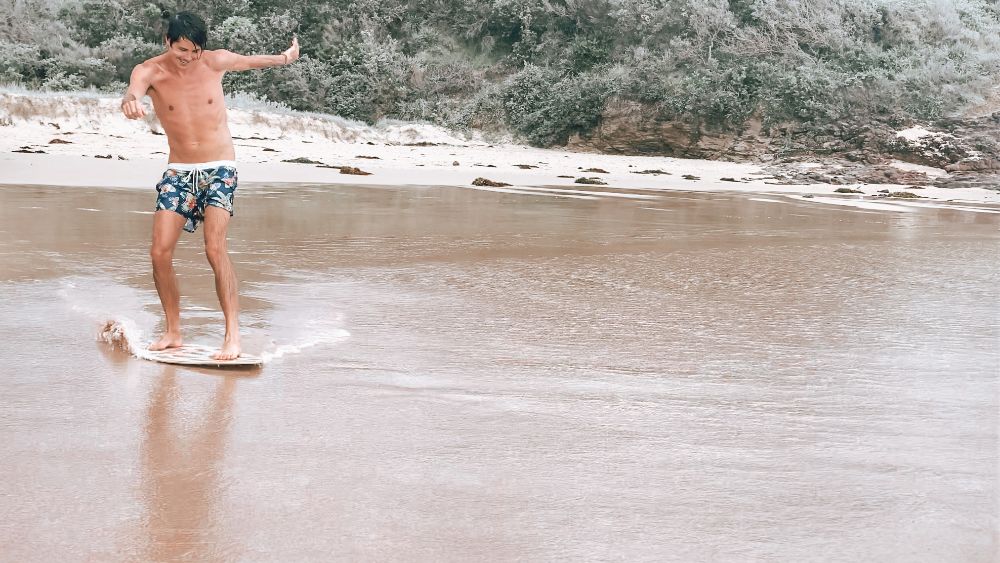
Skimboarding requires you to run really fast and jump onto a small moving object which then slides along the water.
I found when learning being able to run, throw the board down and place my feet on the board was very difficult.
Occasionally one of my feet would miss the board completely.
When this was the back foot I found I could keep momentum running and not fall over. But when it was the front foot I miss I would often simply fall forwards.
2. Misplacing Your Feet
Even if you get your feet on the board you need to place them towards the center otherwise the board can dig into the sand or water and again led to some falls.
3. Hitting My Feet or Shins with My Board
When skimboarding you throw the board down as you simultaneously jump onto it.
However, occasionally the board ends up on top of your feet which can hurt or you hit your shin on the way down.
Neither were fun experiences.
4. Hitting The Sand on Shorebreak Waves
If you eventually get good enough to ride waves then you'll be riding waves that break directly onto the shore. These are called Shorebreaks.
As someone who regularly body surfs shorebreaks I am well aware of the dangers they pose.
Large waves crashing either directly onto sand or very shallow water means that you are highly likely to hit the sand with your body and then have the force of the wave pushing down on you.
Broken spine and back injuries are my biggest fear here but I'm sure they are rare. Plus you'd have to be riding pretty big shorebreaks to be at a serious risk.
5. Ocean Rips
As always when you're dealing with the ocean you need to be aware of rips and currents that can sweep you out to sea.
Even though you don't go out deep when skimboarding it's a good idea to be a strong swimmer and have a good knowledge of the ocean.
How To Reduce Risk When Skimboarding
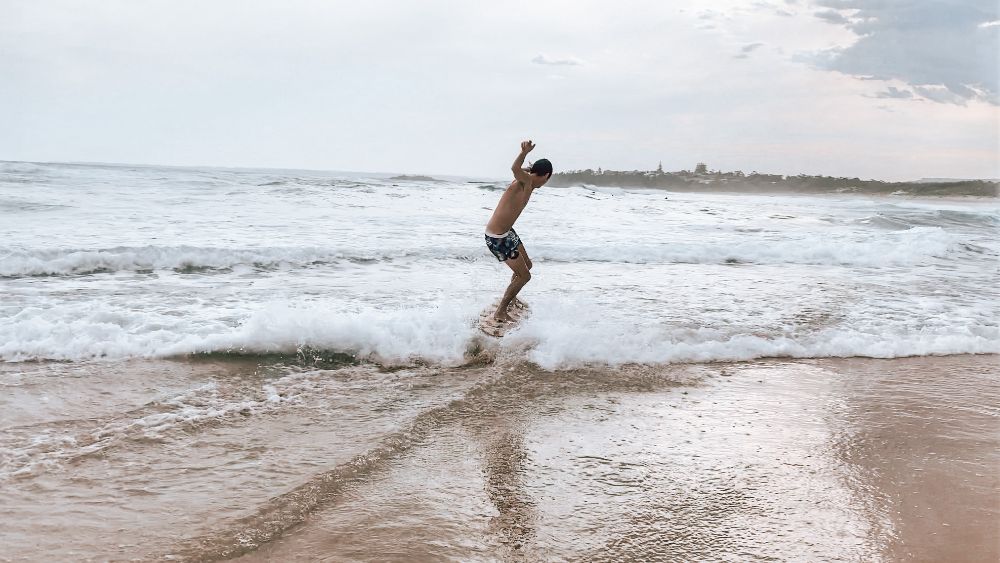
While skimboarding will always carry some risks of injury there are ways you can minimise the risks so you are less likely to hurt yourself.
Begin Slowly and Work Your Way Up
The key to reducing risk when skimboarding is to begin slowly and work your way up.
Being with a slow jog or even a fast walk and practice exactly how to drop and land on your board correctly.
Going slow in the beginning means you don't skim very far at all, but it gives you time to get your technique right, allowing you to work up to higher speeds.
Use Good Wax or Pads On The Top of Your Skimboard
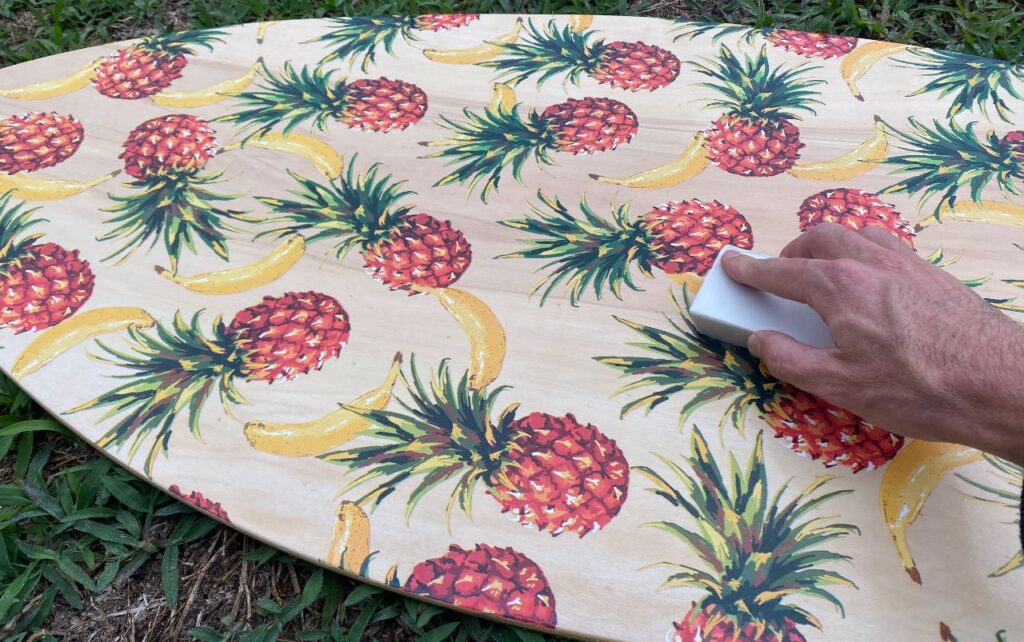
A mistake some beginners make when skimboarding is they fail to wax their skimboard correctly.
Use a sticky surf wax or grip pads on the top of your skimboard so your feet will easily grip to it when skimming.
Failure to do this will make your board extremely slippery when wet and your feet may slip off at high speeds causing you to faceplant.
Focus On Getting Your Feet Centered
One of the biggest causes of falls and injuries in skimboarding is poor placement of your feet. Either to the side of the board, which causes the board to dig into the ground and stop, or missing the board completely.
Focus on your feet and getting good at getting your feet completely centered on your board.
Avoid Skimming On Dry Sand
Dry sand can cause your skimboard to stop suddenly while all of your momentum continues forward into a fall.
Make sure you're skimming on wet sand or in shallow water and avoid any dry sand or dry ground in general.
Use Speedwax On The Bottom of Your Skimboard
While the general consensus in the skimboarding community is that you don't need to put speed wax on the bottom of your skimboard it can be helpful in some circumstances.
Speedwax can potentially help your board slide on otherwise grippy ground (eg. dry sand).
Click here to see my list of the best speed waxes for skimboarding
or below is the wax I recommend:
See the latest price of ZUMWax at Amazon

Is Skimboarding More Dangerous than Surfing?
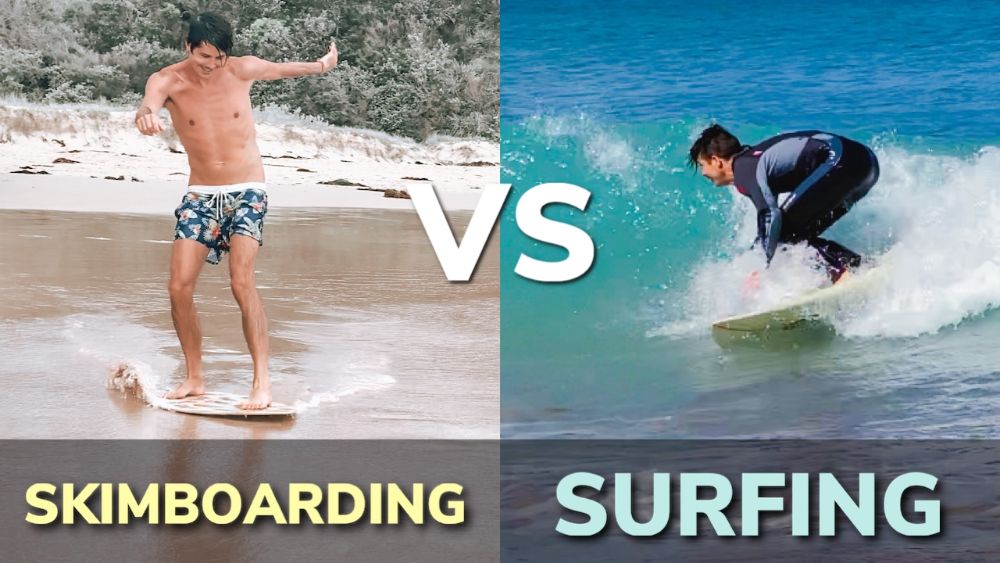
Skimboarding carries different risks that surfing so it's difficult to say which is more dangerous than the other.
Skimboarding has increased risk of falling onto the sand while travelling at fast speeds but the waves are usually smaller. Surfing has risks of bigger waves, reef and rock breaks which you can be swept up against and being fin sliced or hit by your own board or someone else's board while out in the water.
Read the full article about skimboarding vs surfing for more details

